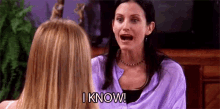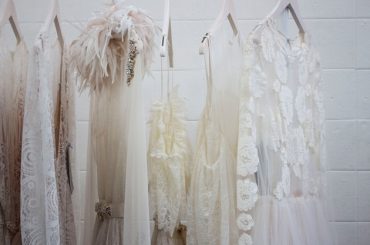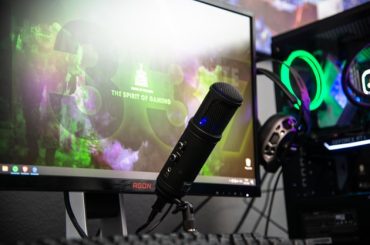In our previous article, we discussed how it is important to design our systems to be more sustainable and strive to create a circular economy.
The questions here are, how do we efficiently design our systems? How do we undo or control the damage that has already taken place? Let us now ponder these questions over a latte at Central Perk with my favorite set of people. (If you know, you know).
Circular Economy
A couple of weeks earlier, I was giving a test where I had to build a food chain. I was given a set of organisms, their food preferences, and calorie consumption. I had to build a food chain from scratch so that there is synergy between each element of the food chain.
During the test (certainly not a good time to ponder), I realized how intricately designed, complex, yet beautiful our food chain/food web is. It is absolutely foolproof- there is zero wastage in the entire cycle. Zero-waste and still manages to sustain 8M+ species on the planet. The food chain/web is the best inspiration for a model of Circular Economy.
Circling back to our initial question. If our economy continues to run linearly, it is safe to say that we are inching towards extinction every day.

Yes, Ross- now we pivot our strategy and look for answers in the source that has sustained us and supported us since the very beginning of our existence. We failed to see millions of years worth of research spent in designing the entire ecosystem. Nature is the greatest strategist- and Biomimicry is the ultimate sustainable strategy.
What is the meaning of Biomimicry? Essentially, Biomimicry is a strategy where we learn and emulate nature’s designs, processes, and ecosystems to create a sustainable world. Let us see a few examples of biomimicry. Hop on your seats and put on your seat belts, we’ll take you through the journey after which you will never see Nature the same way again.

Biomimicry Examples
Biomimicry of Design:
When bullet trains were first introduced in Japan, people often complained of a huge booming sound when these trains excited the tunnels. The cushion of air that built up in front of the speed train (which was going at 300km/hr) would be the source of this noise.
While searching for the solution to reduce this, the engineers were inspired by a kingfisher. The bullet train was designed similarly- with a large head and narrow beak. This design reduced the sound, increased the speed, and reduced the fuel usage of the bullet train.
As we know, Waste disposed of in water bodies is hazardous to underwater animals and has the potential to enter the food chain and affect the entire ecosystem. Taking inspiration from how organisms like basking sharks and manta rays filter food from the water. The Hague University of Applied Sciences designed the Floating Coconet which collects and directs free-flowing plastics, small and large, in rivers for safer capture.
In the next example, biomimicry aided in discovery and enhancement. The flight of a bird inspired the first flying machines. The next question- “how can we make the flight more efficient?” was also discovered by observing the migratory birds.
Ever wondered why migratory birds fly in a particular V-shaped pattern? When scientists imitated the same design with planes- they found an interesting revelation. The induced aircraft drag for the succeeding flights was considerably reduced, which led to lower fuel usage.
There are innumerous examples of biomimicry i.e., human inventions mimicked by nature’s design- now let us look into various processes that have been mimicked by humans from Nature.
Biomimicry of Process
One of my favorite examples of Biomimicry and a very important one- Carbon Capture and Storage. Given the rising climate crisis, it is more important than ever to find ways to reduce the concentration of CO2 on the planet.
Nature is already a step ahead, for a million years- Earth has been capturing carbon and storing them in the form of carbonate on rocks. This natural process of storing CO2 is called mineral carbonation and a popular example is the white cliff of Dover in England.
The color of the cliffs is white due to the absorption of CO2. However, the process is prolonged and takes a long time to absorb, which is not sustainable since the amount of CO2 produced is higher than the amount absorbed.
Scientists have taken inspiration from this model and have been researching various forms of carbon sequestration. Carbon sequestration is the process of capturing and storing atmospheric carbon dioxide.
MCi (Mineral Carbonation International) recently introduced a technology where it recycles industrial waste and impure CO2. These products are converted into carbonate form and utilized to make building materials such as cement brick or plasterboard. This is another example of a circular economy, where waste is utilized to create new products with a different set of applications, thus eliminating the waste in this cycle. This brings new technology to the building materials industry, and only time can tell how this experiment moves forward.
Since we’ve touched on this topic- let’s discuss in detail the Carbon Capture and Storage (CCS) System. Traditionally, Carbon Capture and Storage involves capturing CO2 emissions from fossil fuel and biomass and injecting them back under the ground. They are stored in several layers underground, and the use of carbon sequestration depends on where they are injected.
Here we can see different areas at which CO2 can be injected. The first being, saline formation or oil and gas beds. Present at depths below 800m2, various physical and geochemical trapping mechanisms would stop CO2 from migration to the surface. CO2 can be injected in shallow coal beds with the idea of CO2 being absorbed in the coal- however that largely depends on the permeability of the coal bed.
Storing CO2 with Enhanced Oil Recovery or Enhanced coal bed Methane Recovery would lead to additional revenue for the gas and oil recovery. Moreover, CCS also facilitates the large-scale production of Hydrogen, which is predicted to be a major game-changer in the clean fuel industry.
A potential solution for the impending doom of Climate Change is provided by Nature and facilitated by Nature itself, hence another example of biomimicry. CCS will lower the CO2 concentration in the atmosphere and help us support cleaner fuel initiatives. Isn’t it amazing how it is solving two problems in one go?
Chandler: “Could there BE a better strategy than Biomimicry for Sustainable solutions?”

Thank you, Chandler and Monica. Nature has inspired many discoveries in the past, and nature continues to show us the path to recover from the crisis that we have brought on to ourselves. We need to observe and understand- there is a solution that can be found in Nature for every problem that exists.
Nature is always hinting at us. It hints over and over again. And suddenly, we take the hint.
Robert Frost
-AMAZONPOLLY-ONLYWORDS-START-
Also, check out our most loved stories below

Why did Michelin, a tire company, decide to rate restaurants?
Is ‘Michelin Star’ by the same Michelin that sells tires, yes, it is! But Why? How a tire company evaluations became most coveted in the culinary industry?

Johnnie Walker – The legend that keeps walking!
Johnnie Walker is a 200 years old brand but it is still going strong with its marketing strategies and bold attitude to challenge the conventional norms.

Starbucks prices products on value not cost. Why?
In value-based pricing, products are price based on the perceived value instead of cost. Starbucks has mastered the art of value-based pricing. How?

Nike doesn’t sell shoes. It sells an idea!!
Nike has built one of the most powerful brands in the world through its benefit based marketing strategy. What is this strategy and how Nike has used it?

Domino’s is not a pizza delivery company. What is it then?
How one step towards digital transformation completely changed the brand perception of Domino’s from a pizza delivery company to a technology company?

BlackRock, the story of the world’s largest shadow bank
BlackRock has $7.9 trillion worth of Asset Under Management which is equal to 91 sovereign wealth funds managed. What made it unknown but a massive banker?

Why does Tesla’s Zero Dollar Budget Marketing Strategy work?
Touted as the most valuable car company in the world, Tesla firmly sticks to its zero dollar marketing. Then what is Tesla’s marketing strategy?

The Nokia Saga – Rise, Fall and Return
Nokia is a perfect case study of a business that once invincible but failed to maintain leadership as it did not innovate as fast as its competitors did!

Yahoo! The story of strategic mistakes
Yahoo’s story or case study is full of strategic mistakes. From wrong to missed acquisitions, wrong CEOs, the list is endless. No matter how great the product was!!

Apple – A Unique Take on Social Media Strategy
Apple’s social media strategy is extremely unusual. In this piece, we connect Apple’s unique and successful take on social media to its core values.
-AMAZONPOLLY-ONLYWORDS-END-

















